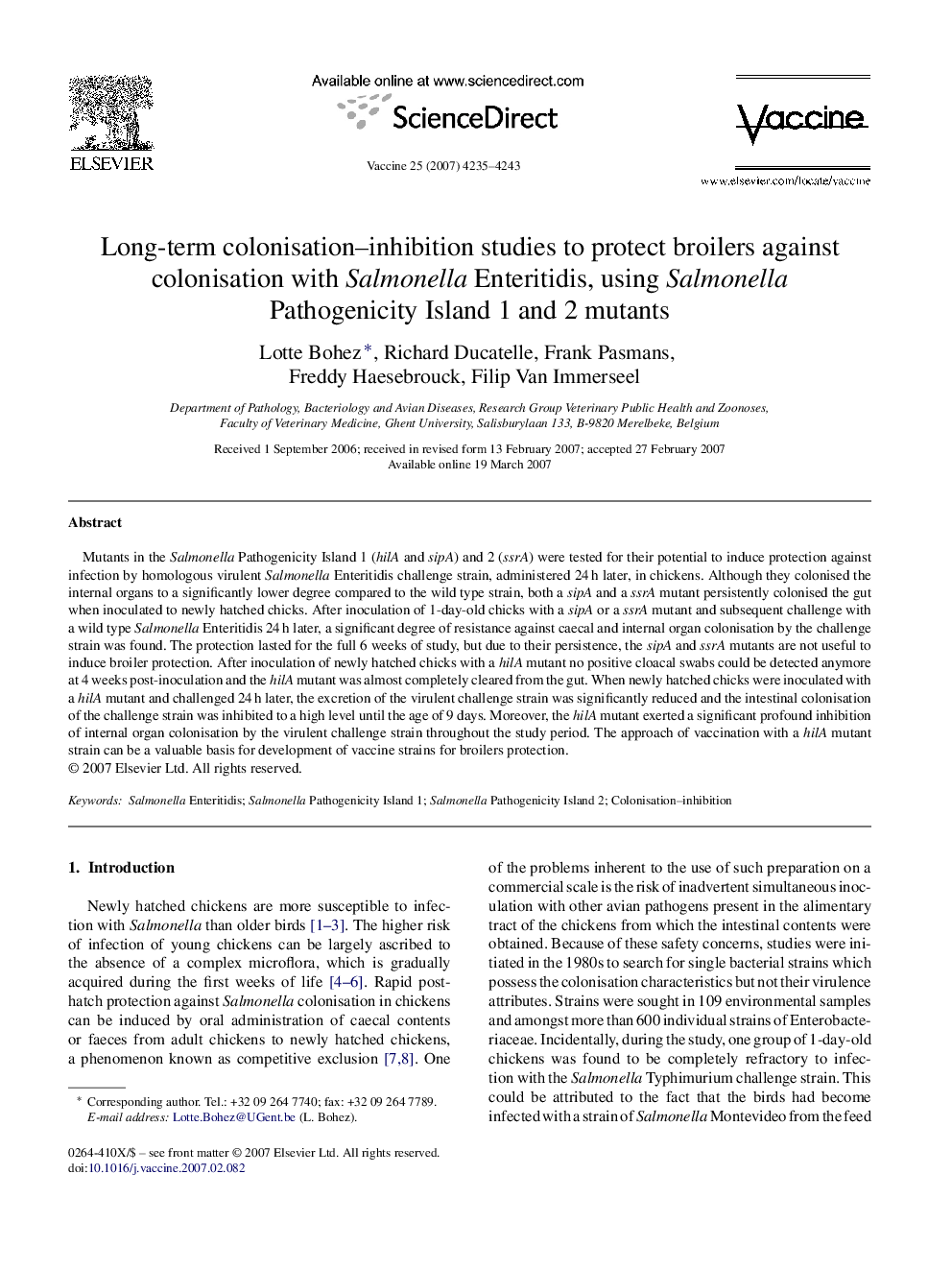| Article ID | Journal | Published Year | Pages | File Type |
|---|---|---|---|---|
| 10970479 | Vaccine | 2007 | 9 Pages |
Abstract
Mutants in the Salmonella Pathogenicity Island 1 (hilA and sipA) and 2 (ssrA) were tested for their potential to induce protection against infection by homologous virulent Salmonella Enteritidis challenge strain, administered 24Â h later, in chickens. Although they colonised the internal organs to a significantly lower degree compared to the wild type strain, both a sipA and a ssrA mutant persistently colonised the gut when inoculated to newly hatched chicks. After inoculation of 1-day-old chicks with a sipA or a ssrA mutant and subsequent challenge with a wild type Salmonella Enteritidis 24Â h later, a significant degree of resistance against caecal and internal organ colonisation by the challenge strain was found. The protection lasted for the full 6 weeks of study, but due to their persistence, the sipA and ssrA mutants are not useful to induce broiler protection. After inoculation of newly hatched chicks with a hilA mutant no positive cloacal swabs could be detected anymore at 4 weeks post-inoculation and the hilA mutant was almost completely cleared from the gut. When newly hatched chicks were inoculated with a hilA mutant and challenged 24Â h later, the excretion of the virulent challenge strain was significantly reduced and the intestinal colonisation of the challenge strain was inhibited to a high level until the age of 9 days. Moreover, the hilA mutant exerted a significant profound inhibition of internal organ colonisation by the virulent challenge strain throughout the study period. The approach of vaccination with a hilA mutant strain can be a valuable basis for development of vaccine strains for broilers protection.
Related Topics
Life Sciences
Immunology and Microbiology
Immunology
Authors
Lotte Bohez, Richard Ducatelle, Frank Pasmans, Freddy Haesebrouck, Filip Van Immerseel,
